Data, Information, Knowledge and Wisdom (DIKW) are four items that we deal with each day. After reading this article you will have a mental model how they relate to each other. You can use it to become a better trainer, extract better information from data, or define how to manage knowledge in your organization.
Sharing what I have learnt in the past is important to me. Organizations and teams can make better decisions when access to information is open. Knowledge should be available in a variety of ways: the people, in written form, accessible data, and more…
The DIKW model helps to understand the relation of knowledge to other elements. The concept is not new.
This article is my own version with a graphical representation that differs from what you would usually see.
There are many definitions of what the individual elements are. The Wikipedia page has multiple concepts for each of them. Some say that machines can handle only data. Others say that AI can create new knowledge from information and existing knowledge. Opinions diverge even more when it comes to wisdom in this context.
A Visual Model
The model is usually drawn as a pyramid. That hints at data being reduced to information, being reduced to knowledge, being reduced to wisdom. But it is not a hierarchy! An HBR Article describes this flaw this way:
The real problem with the DIKW pyramid is that it’s a pyramid. The image that knowledge (much less wisdom) results from applying finer-grained filters at each level, paints the wrong picture. […] Knowledge is more creative, messier, harder won, and far more discontinuous.
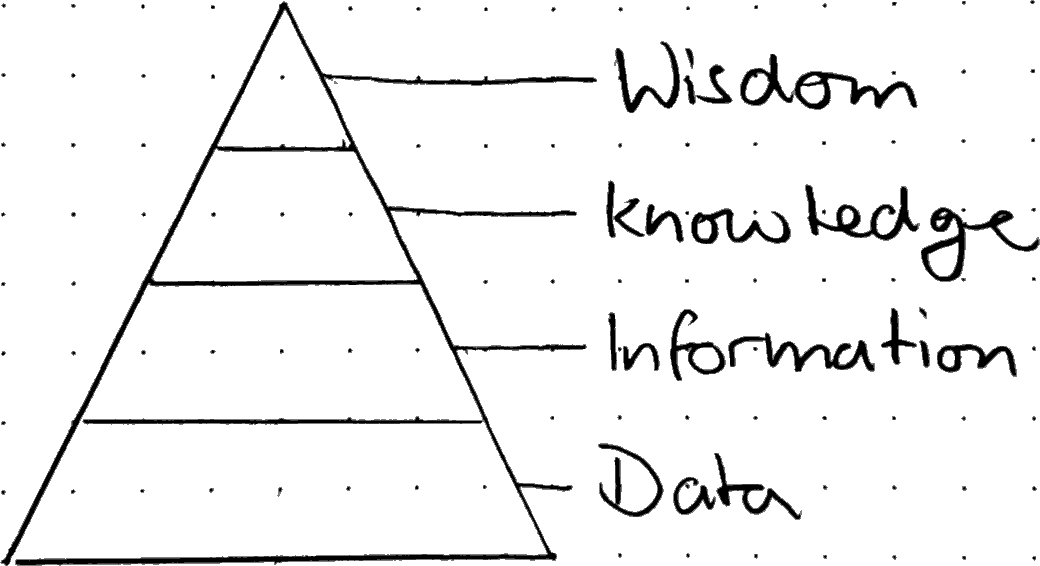
Here is my own definition and how the elements fit together:
Data
Data are single facts and observations without any context. They are what we actually process and store in machines.
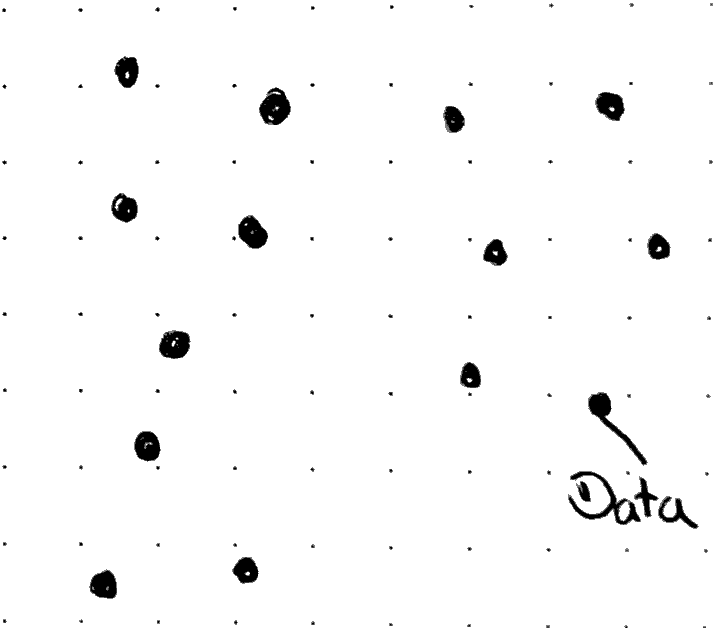
Coffee Example: 54 g/kg
Information
Information is a collection of data that is meaningful; it is something you can understand. Information has added context to the raw data. Patterns emerge at this level. It can be shared through e.g. writing and teaching.
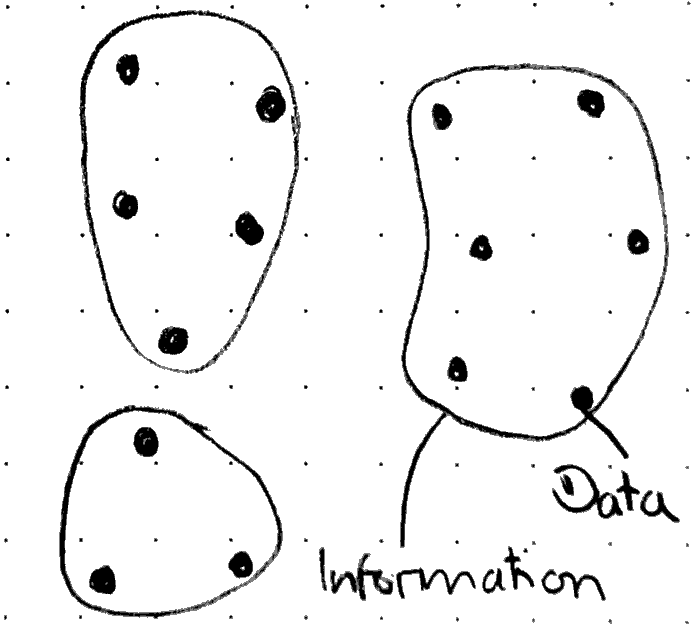
Coffee Example: 54 grams coffee beans, coarsely ground, are needed for one kilogram of water at 95 °C for a french press.
Knowledge
If information is combined with personal experience and practice you have Knowledge. It becomes more valuable through associations and connections between information. When you have knowledge you can expand existing data and information.
For example, Knowledge management is never only a process or a tool like a wiki where we write down what we "know". It can only be stored as information or data. You will always need people that train others as well as trainees that practice what they learn.
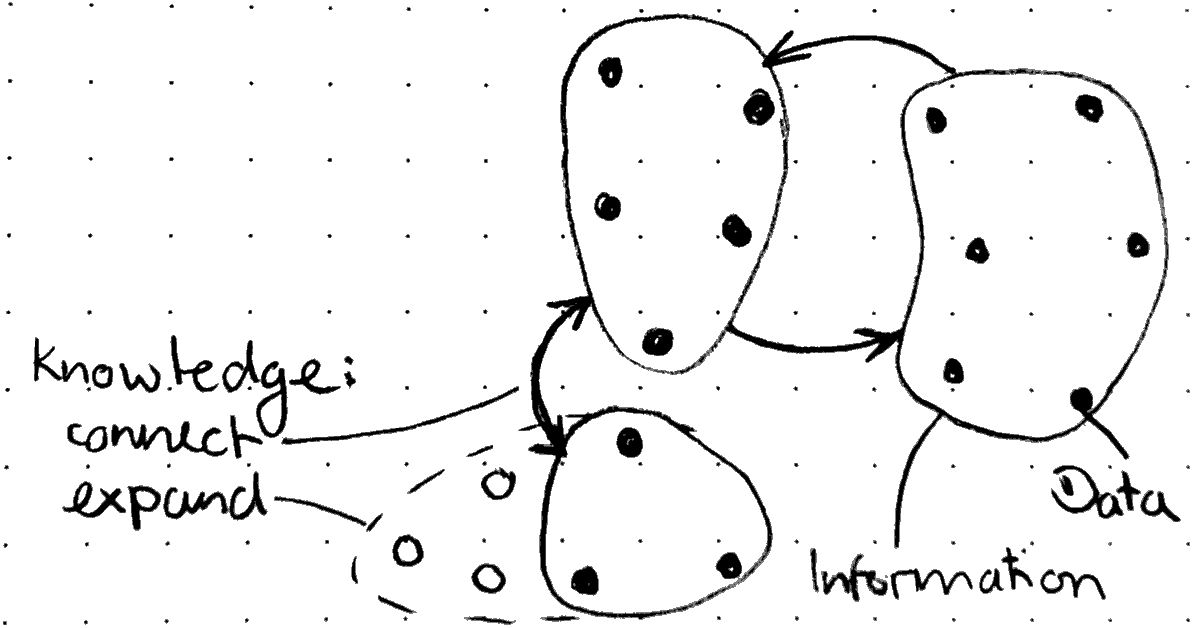
Coffee Example: After using a dark roast for a while, I switched to a medium-dark roast for a better flavor. 58 g/kg is perfect for this type. There are many other bean types I could try.
Wisdom
Wisdom adds intuition and judgement to knowledge. At this level you will be able to extrapolate into uncharted areas. Your can make hypotheses and set out to validate them; e.g. with the scientific method.
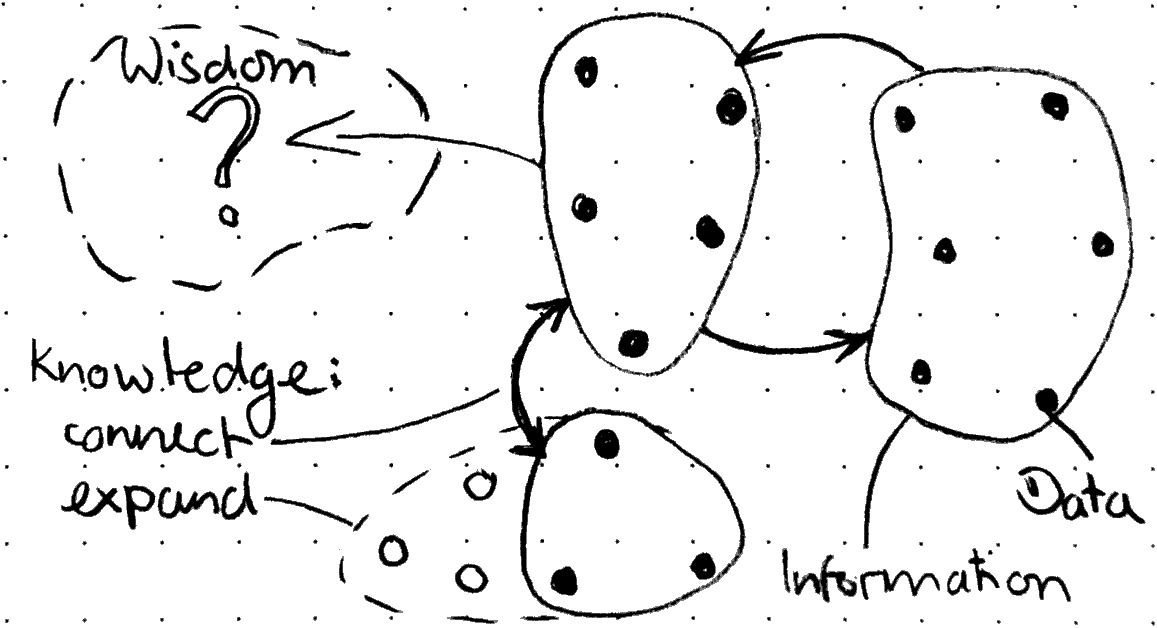
Coffee Example: We should get our beans from this special farm, because they had a very good climate for the last harvest. Then we can try to roast them with a new temperature profile to slow the Maillard reaction… [1]
Can Artificial Intelligence Have Wisdom?
I believe that wisdom — and maybe even knowledge — is limited to humans. But machines can handle much more information than we ever could. AI can do complex things with information alone that a human would need wisdom for. As long as there is a pattern, a machine will be able to recognize it.
We have made great discoveries by venturing into the unkown unknowns. Are we just using our intuition as a shortcut for not having sufficient information?
I digress! This is a rabbit hole and I lack the knowledge to go any further in this direction.
Applications in Real Life
You now know the Data, Information, Knowledge, and Wisdom mental model. It is not a hierarchy but a system with complex interactions that depend on the people using it.
Our data management tools only store data, even if they are called knowledge management systems. Always try to make it easy for humans to get information from them.
The model can help when you want to hire awesome people that bring knowledge and wisdom. Probe if a candidate can only recite the theory, can apply it, or can come up with new concepts.
And finally, remember to add practice sessions when you train someone. Then you share information and directly turn it into knowledge for the trainee.